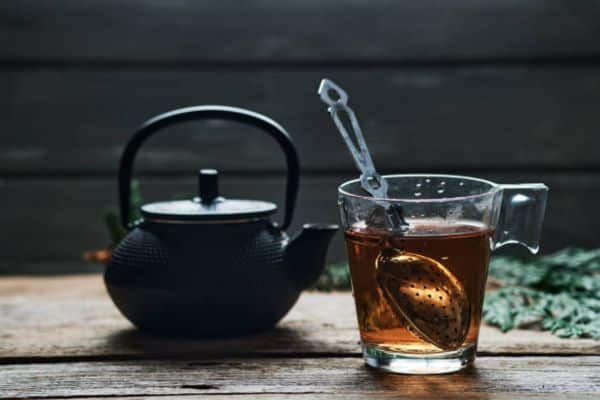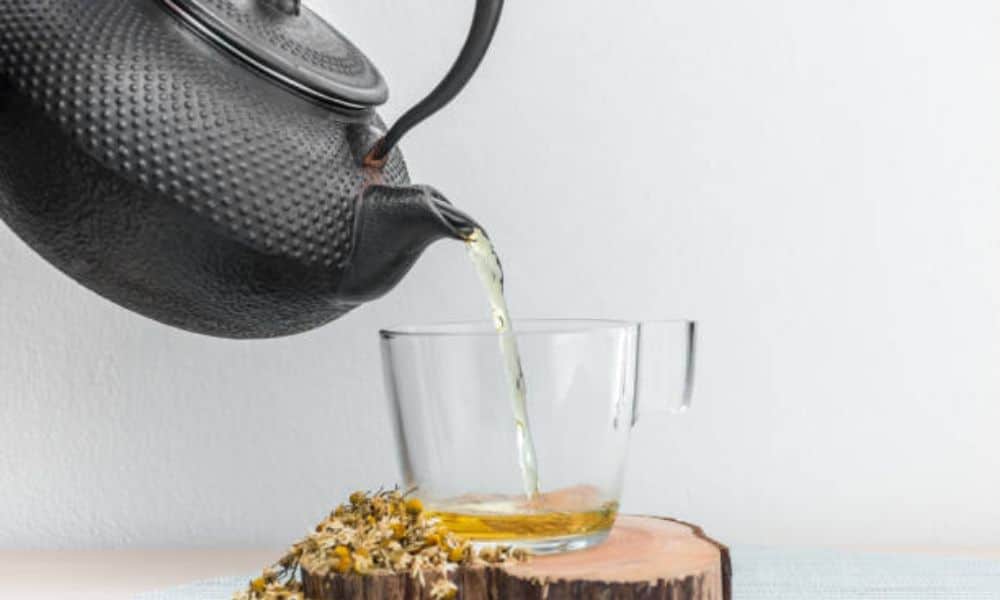My first cast iron tea kettle looked strong and timeless. It felt heavy in my hands, like it had its own story. I was new to it and made a few mistakes. The tea tasted bad. The kettle burned on the bottom. I almost gave up. But I didn’t. I learned how to treat it right. Now, making tea with this kettle is a calm and simple joy. It’s more than boiling water. It’s a small daily ritual. Learning how to use a cast iron tea kettle made my tea better. It also made me slow down. Each cup feels special. The kettle holds heat well and gives the tea a deep, smooth taste. In this guide, I’ll show you everything I’ve learned. From my own trial and error. From years of brewing tea the slow way.
What Is a Cast Iron Tea Kettle?
A cast iron tea kettle is not just a tool. It’s a slow ritual in a fast world. Thick iron holds heat better than steel or glass. That’s why many tea lovers prefer it.
There are two kinds: a kettle made for the stove and a teapot used for steeping. The kettle has no lining inside and boils water easily. The teapot often has an enamel coat. That one is for steeping only, not for direct heat.
The love for these kettles runs deep. They feel solid in the hand. They carry a quiet charm.It feels fuller. Smoother. The taste lingers, like comfort in a cup.
Quick Safety Notes Before You Begin
First, check the inside of your kettle. If it’s smooth and shiny, it’s coated with enamel. That type is made for steeping, not boiling. Do not place it on direct heat. Boil your water in another pot, then pour it in.
If the inside looks rough and dark, it’s raw cast iron. This kind can go on the stove. But use low to medium heat. Never turn it up high. Cast iron heats slowly, and that’s part of the charm.
Avoid soap. It strips away the layer that protects the metal. Rinse with warm water instead. Wipe it dry with a soft cloth after each use.
Keep it out of the microwave. That’s a no-go for all types. Also, don’t leave water sitting inside. It may cause rust, even in enamel-lined kettles.
01. Rinse Before Use

Start by rinsing the kettle with warm water. This removes any dust and wakes up the metal. It’s a small step that makes a big difference. Always rinse your cast iron kettle with warm water before brewing to keep it fresh.
02. Heat Water Slowly (For Stovetop Kettles)
If your kettle is raw cast iron, place it on the stove. Fill it halfway and turn the heat to low or medium. Let it warm slowly. Fast heat can cause cracks or stains. Use low heat to warm a cast iron kettle gradually and avoid damage.
03. Warm the Kettle (For Enamel-Lined Teapots)
Don’t boil water in enamel-lined teapots. Instead, pour hot water in, swirl it gently, and then pour it out. This keeps your tea hot for longer. Pre-warm enamel-lined teapots with hot water before steeping for better results.
04. Add Your Tea

Place loose-leaf tea in a strainer or use a tea bag—ideally brewing it in the Best Non Toxic Electric Tea Kettle for a clean, flavour-rich cup. Choose your favourite blend; the cast-iron body keeps the heat steady while the flavours bloom. Add the tea once the kettle is warmed to help it steep evenly and stay hot longer.
05. Pour and Steep
Add hot water over the tea. Let it steep based on your tea type—usually 2 to 5 minutes. Cover the kettle with the lid to lock in the heat. Steep tea in a cast iron kettle for 2–5 minutes, depending on the variety.
06. Serve and Enjoy
Pour the tea into your cup and enjoy. Feel the warmth in your hands. Notice how full and smooth the flavour tastes.
Tea Brewing Tips from Personal Experience

Making tea isn’t just about heat and water. It’s about rhythm. Over time, I’ve picked up a few tricks that make every cup better—and a little more joyful.
Use Fresh, Filtered Water
Water makes up most. I used to use tap water, but it left a flat taste. Now I use filtered water. The taste is cleaner, and it brings out the tea’s real notes.
Measure Your Tea
More leaves don’t mean better. I learned that the hard way. One teaspoon per cup is enough. Too much tea can turn bitter, especially in kettle that holds heat well.
Watch the Steep Time
Set a timer. Seriously—it helps. Green teas need less time (about 2 minutes). Black teas can go longer (up to 5). Leaving it too long makes it harsh.
Let the Kettle Work for You
Cast iron holds heat. That’s its gift. I often steep my tea and let it sit a little longer in the pot. It stays warm without a reheat. Perfect for second pours.
Stick to Loose Leaf
Tea bags are easy, but loose leaf tastes better. The leaves have space to open and infuse. It’s the kind of upgrade you notice after just one try.
Making a cast-iron kettle slows things down in the best way. It’s not just a drink—it’s a moment. With the right steps, every cup can feel like a small reward.
Types of Cast Iron Kettles (And When to Use Each One)
Not all kettles are the same. They may look similar, but each has a different job. Knowing the type you have makes all the difference.
Tetsubin (Raw Kettles)
Tetsubin are made from raw iron, with no coating inside. These are the real deal. They go straight on the stove and boil water with ease. I use mine for daily tea—it holds heat well and gives the water a deep, mellow taste.
Enamel-Lined Cast Iron Teapots
These are coated inside with enamel. They’re pretty and easy to clean. But don’t boil water in them. I heat water in a pan, then pour it in. They keep tea warm and are perfect for steeping.
Decorative Kettles
Some cast iron kettles are just for looks. They may have bright paint, fragile details, or odd shapes. They’re not meant to hold heat or handle water. I’ve seen these on shelves, not stoves.
Picking the right type isn’t hard. Just look inside. Smooth and glossy means enamel. Rough and dark means raw iron. No matter the type, each one has a place—some for brewing, others for beauty.
Cleaning and Caring

It will last years—if you treat it right. Cleaning is simple, but it matters. A little care after each use keeps it strong, safe, and rust-free.
No Soap, Ever
Soap strips away the surface layer that builds up with use. That layer protects the kettle from rust and helps the flavor grow richer. Rinse it with warm water only. Use your hands or a soft cloth—nothing rough.
Dry It Right Away
After rinsing, wipe the inside and outside with a clean towel. Don’t let it air-dry with water inside. Even a few drops can cause rust. I always flip mine upside down for a minute to let any water run out.
Leave the Lid Off
This small habit makes a big difference. Leaving the lid open helps air flow through. It keeps the inside fresh and stops moisture from building up overnight.
Oil the Outside (Optional)
Raw iron can dry out or flake over time. Once a month, I rub a little food-safe oil on the outside. Just a thin layer. This keeps it smooth and gives it a nice, soft shine.
Avoid Hard Scrubs
Don’t scrape or scrub hard. That can damage the surface, even in enamel-lined kettles. If stains appear, fill it with warm water and let it soak. Then wipe it gently.
Common Mistakes (and How to Avoid Them)
Even the best kettles can suffer from small mistakes. I’ve made them. You might too. The good news? They’re easy to fix—and even easier to avoid.
Using Too Much Heat
It takes time to warm up. Cranking the heat to full doesn’t speed it up—it just stresses the metal. This can lead to cracking or discolouration. Stick to low or medium heat. Let it rise slowly.
Leaving Water Inside
This one is easy to forget.It’s tempting to leave the water for later. But water left sitting causes rust. I always empty mine and dry it after each use.
Using Soap or Strong Cleaners
Soap breaks down the kettle’s surface. It removes the natural seasoning and can even leave a taste. Rinse with warm water. No soap, no bleach, no shortcuts.
Steeping the Wrong Tea Too Long
Some teas turn bitter if left too long. Strong black or green teas steep fast. Use a timer. Even in a pot, too much time makes tea sharp and dry.
Not Checking the Kettle Type
Many people boil water in enamel-lined pots. That can crack the lining. Always check the inside. If it’s smooth and shiny, don’t use it on a stove. Heat water in another pot and pour it in.
Final Thoughts
Learning how to use changed my routine. It made me pause. It helped me enjoy the moment, not just the drink. And the tea? It got better—richer, warmer, more honest.
There’s something special about lifting a heavy lid, hearing the soft pour, and feeling the warmth pass into your hands. It reminds you to slow down, to care more, and to find joy in the small things.
So take your time. Let the water heat slowly. Let the leaves bloom at their own pace. The kettle will wait for you, and the tea will reward your patience.

